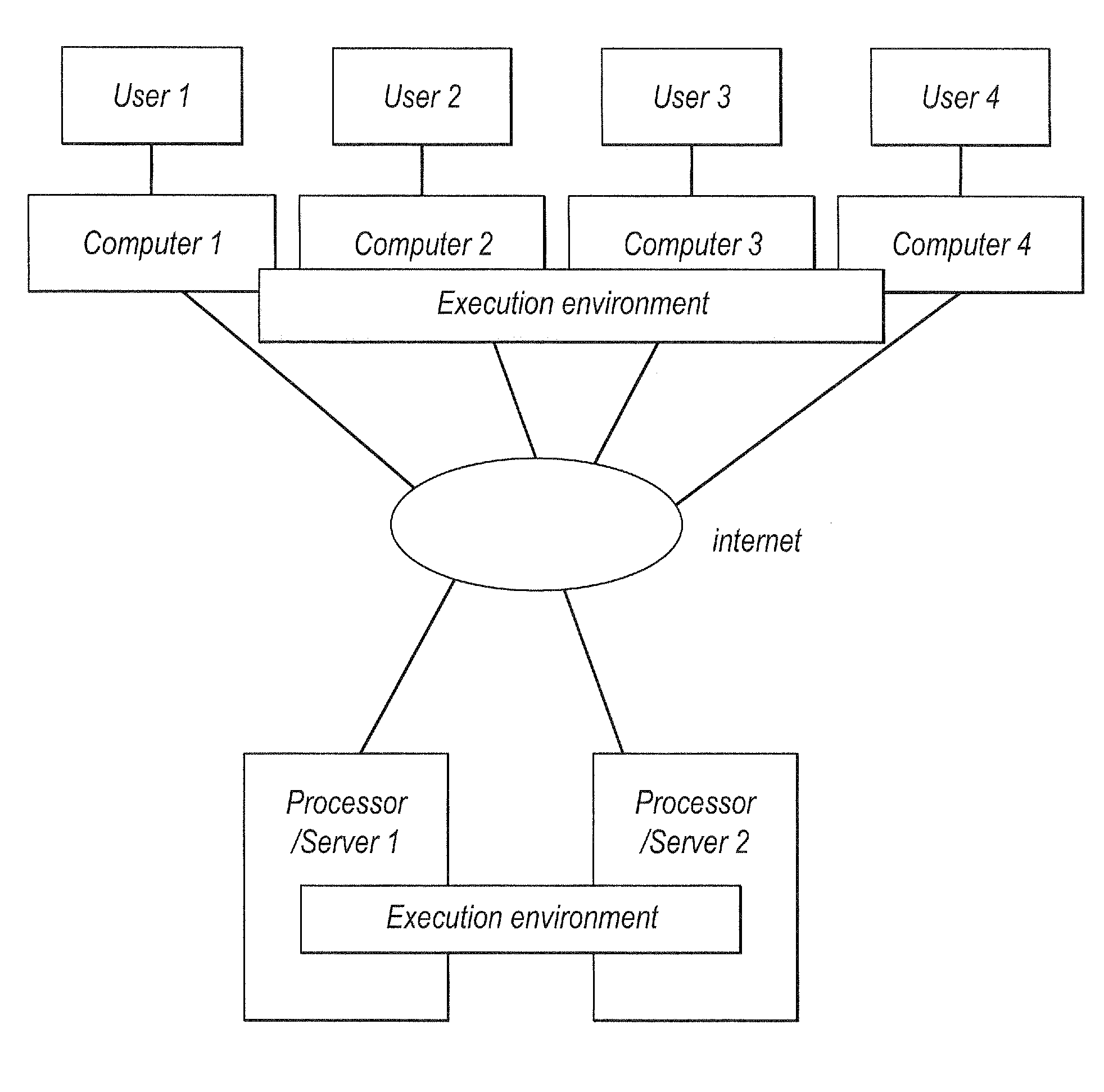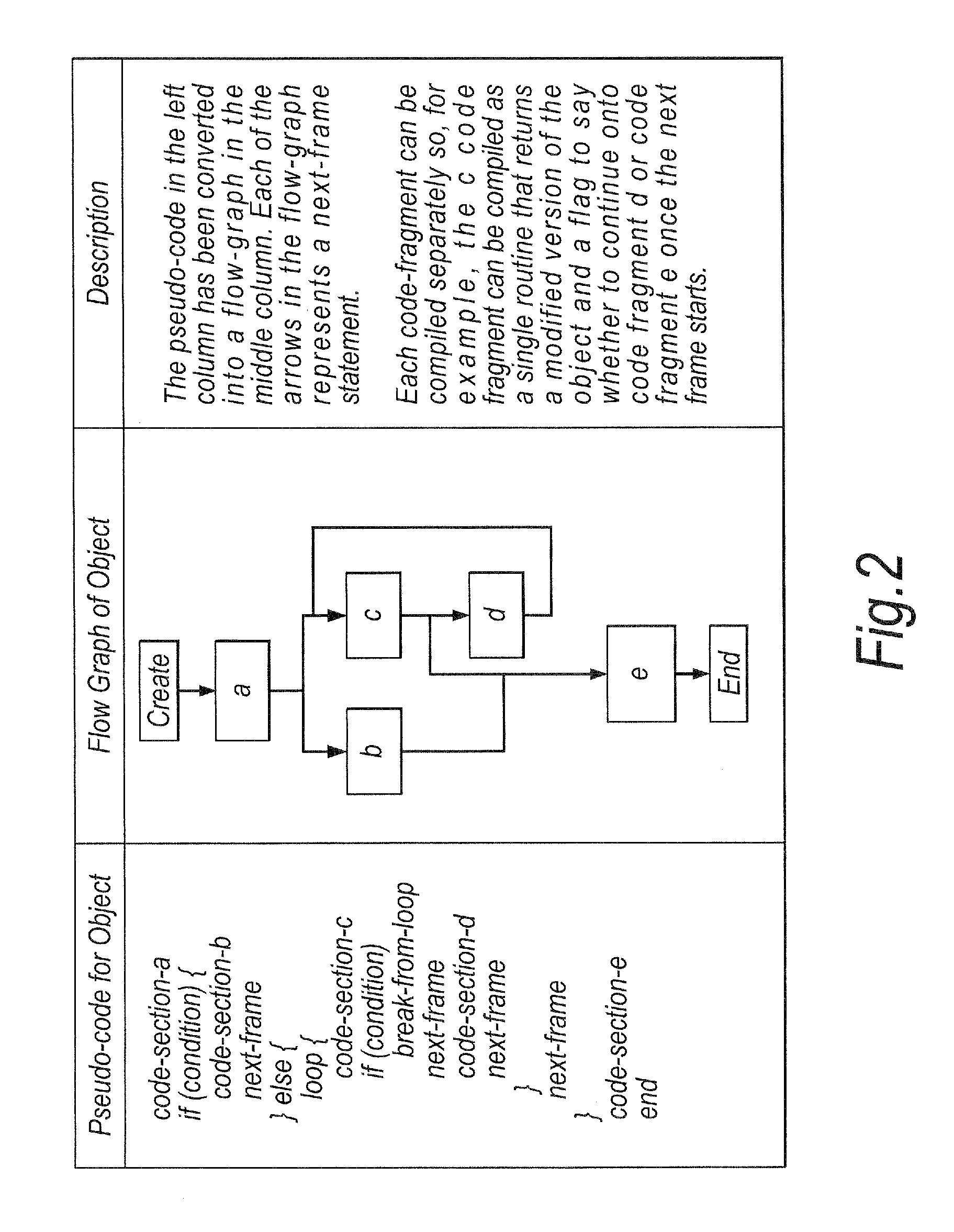Techniques for program execution
a technology of program execution and program objects, applied in the field of program execution, can solve the problems of non-deterministic parallel programming systems, affecting the performance of programs, so as to facilitate the implementation of large-scale deployment, facilitate the distribution or parallel execution of program objects, and facilitate the effect of parallel execution
- Summary
- Abstract
- Description
- Claims
- Application Information
AI Technical Summary
Benefits of technology
Problems solved by technology
Method used
Image
Examples
Embodiment Construction
[0109]FIG. 1 shows a computer system for allowing a plurality of users' computers 1-4 to interact with software that is distributed over a plurality of processors / servers. The system includes, an execution environment, a network transport system, typically the internet, and an interface to external languages and systems (the “Outside World”). Whilst the execution environment is shown extending separately across the users' computers and the processors / servers, it will be appreciated that this is merely a diagrammatic representation and in practice, the execution environment exists across all of these. A compiler (not shown) is required on a development computer for developing the software. The system provides a regular data access model (meaning access to all objects in the systems appears to the programmer to be the same). All data within the system is in the form of objects. A reference to an object can point to an object in any part of the distributed system. The pointer can even ...
PUM
 Login to View More
Login to View More Abstract
Description
Claims
Application Information
 Login to View More
Login to View More - R&D
- Intellectual Property
- Life Sciences
- Materials
- Tech Scout
- Unparalleled Data Quality
- Higher Quality Content
- 60% Fewer Hallucinations
Browse by: Latest US Patents, China's latest patents, Technical Efficacy Thesaurus, Application Domain, Technology Topic, Popular Technical Reports.
© 2025 PatSnap. All rights reserved.Legal|Privacy policy|Modern Slavery Act Transparency Statement|Sitemap|About US| Contact US: help@patsnap.com



